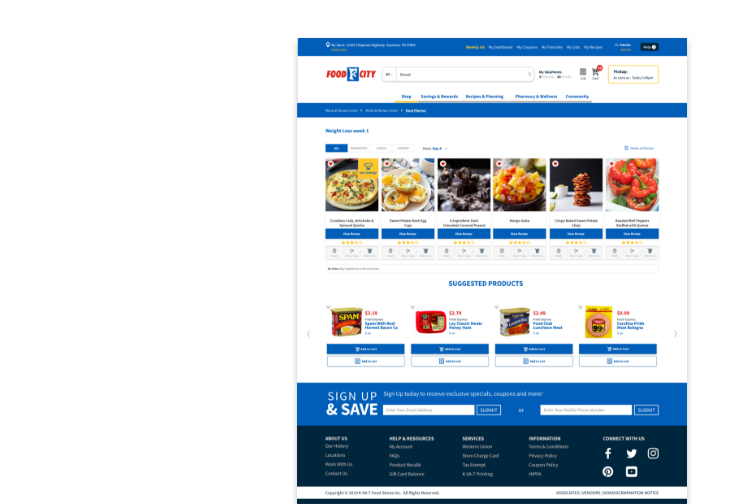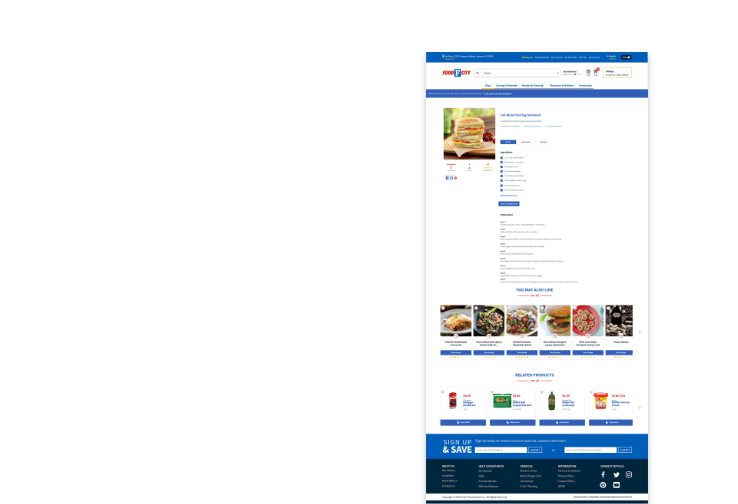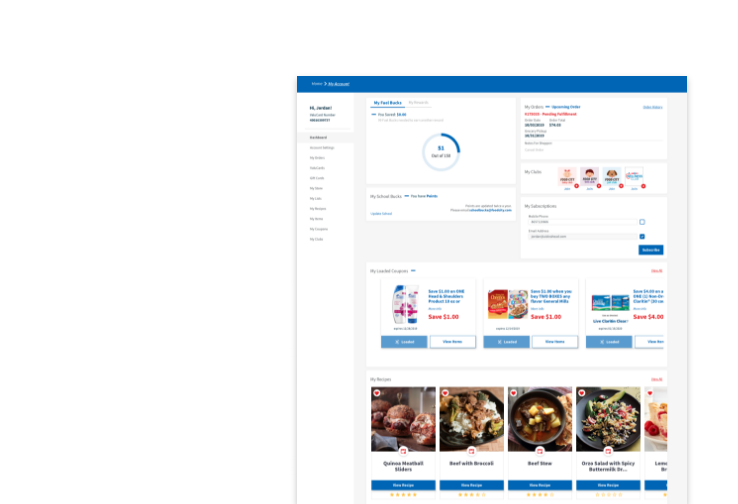
Wellness Club — My Plate Tips
Abingdon, VA. -
Friday, Sep 1, 2023.
Taking the time to prepare and share a meal for family and friends creates an opportunity for connecting and creating memories. Shared meals can be the cornerstone of creating healthy habits for kids and adults. While there are many benefits linked to sharing a meal, aiming to add extra nutrients to the menu can reap even more benefits.
The dietitian team at Food City encourages families to use the USDA MyPlate approach for meal planning. This goal of MyPlate is to offer a simple, straight forward visual guide for building “better for you” meals. The visual emphasizes fruits, vegetables, whole grains, lean protein, and fat-free or low-fat dairy products. Try these tips for adding more color and variety to family meals and “Start Simple” with MyPlate.
Prioritize plenty of fruits and vegetables
Building a healthy plate is easy when you make half your plate fruits and vegetables. A wonderful way to add color, flavor, and texture to any meal. Fruits and vegetables are low in calories and provide vitamins, minerals, and fiber.
Eating enough fruits and vegetables provides beneficial phytonutrients, which are abundant in plant-based food choices. Including fruits and vegetables as a regular part of family meals ensures providing your family with essential nutrients to promote health.
To fit in more fruits and vegetables:
· Aim for 2 servings of fruit and 2 to 3 servings of vegetables each day
· Buy fresh, frozen, and canned to keep a variety of choices on hand
· Serve up a rainbow of colors and offer a variety of hued fruits and vegetables; try red, orange-yellow, green, blue-purple, white, and brown.
· When shopping, look at your cart. If you find most of your choices are the same one or two colors, aim to increase the variety of colors — and phytonutrients — in your cart.
Swap for whole grains
Whole grains include grains like wheat, corn, rice, oats, barley, quinoa, sorghum, spelt, rye – when these foods are eaten in their “whole” form. Look on the package and ingredient list for the words “100% whole grain” or “100% whole wheat.”
Studies show that eating whole grains instead of re?ned grains lowers the risk of many chronic diseases. While bene?ts are greatest with at least 3 servings daily, some studies show reduced risks from as little as one serving daily.
• Try whole grain bread, wraps, pasta, or pitas
• Look for cereals made with grains like Kamut®, kasha (buckwheat) or spelt
• Add three-quarters of a cup of uncooked oats for each pound of ground beef or turkey when you make meatballs, burgers, or meatloaf
• Stir a handful of rolled oats in yogurt
• Swap white rice for brown rice, wild rice, or quinoa
• Switch half the white ?our to whole wheat ?our in your regular recipes for cookies, mu?ns, quick breads and pancakes
Serve up lean protein
Protein tends to be the center of family meal planning. The protein group includes all meat, poultry, seafood, beans, peas, eggs, soy products, nuts, and seeds. MyPlate recommends consuming a variety of foods from the protein group, including at least 8 ounces of seafood each week.
• Choose lean cuts of beef, such as ground round and ground chuck, that are lower in cholesterol and saturated fats
• Remove the skin on poultry to lower cholesterol and saturated fat
• Incorporate plant-based proteins including nuts, seeds, beans, lentils and peas
• Choose salmon, trout, and herring, which are high in omega-3 fatty acids
• Limit products such as hot dogs, sausage, and bacon that have excess saturated fat and added sodium
• Select lower-sodium lean, luncheon meats, such as oven roasted turkey or chicken
• Bake, broil, or grill lean beef, pork, chicken, and turkey to limit added fat with cooking
Pair with low-fat dairy
Dairy foods offer important nutrition for you and your family. Choose low-fat or fat-free dairy foods to get the calcium and vitamin D your body needs for strong teeth and bones. If you cannot drink milk, try calcium-fortified soymilk (soy beverage), low-fat yogurt, cheese, or calcium-enriched foods.
• Use low –fat plain yogurt for toppings and sauces
• Add melted cheese to vegetable dishes
• Pair low-fat cottage cheese with canned fruit for breakfast
• Serve low fat cheese with sliced fruits and veggies for a quick snack
• Swap from whole milk to 2%, low-fat (1%), or skim (fat free) milk
Short Cuts for Family Meals
By focusing on short cuts, you can save time and energy and still serve your family nutritious foods. Here are a few ideas to get you started.
Stock up on quick-to-fix foods: meals are easy to prepare if your pantry, refrigerator, and freezer are stocked with quick-to-fix foods.
• Next time you make a recipe, double it! Freeze extra in meal-size portions so it is easy to grab and reheat
• Pre-chop veggies like onions, carrots, celery, and peppers, then freeze leftovers so you can use them quickly later
• Pro tip: You can cook frozen vegetables straight away. No need to defrost
• Place chicken or beef and marinade in freezer-safe bags. When you are ready, simply defrost or thaw and cook
Prepare ingredients ahead of time: rinse and cut fruits and vegetables and store in the fridge. Cook meat and refrigerate or freeze it to have grilled chicken or ground beef ready for tacos, spaghetti, or a quick sauté
Try quick cooking methods: choose recipes that can feature quick –cooking methods like steaming, microwaving, air-frying, or grilling
Try batch cooking: cook when you have extra time, such as on weekends. Make soups, stews, or casseroles to freeze for the next week
Cook one-dish meals: a variety of items from different food groups can be combined into one dish. Family friendly options like chicken stir fry with noodles, ham and spinach quiche, or chicken and broccoli casserole
Cook extra to have “plan -overs”: using leftovers saves time and stretches your food budget. Having a plan on how to use leftovers can help reduce food waste and cut down on prep for the next meal
Involve kids in family meals. Let children help with simple tasks like washing fruits, choosing veggies, setting the table, or measuring foods. On busy weekdays, give everyone a task to help you get dinner on the table.












